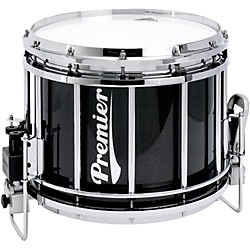Why double sided lugs? What do they provide over the single sided lugs and why specifically for the snare? Tension dissipation? Less stress on the shell?
On a ~2mm metal snare, the torque applied on a single sided lug can exceed the force necessary to bend the shell. Using a double point lug can reduce this a bit, but using a double sided lug will neutralize the force almost entirely. This also applies to thin wood shells.
I imagine single ended and single point lugs work well on ~3mm casted and heavy-ply snares.
So, yes. Less lateral torque on the lug's point-of-contact of the shell.
To demonstrate, hammer a nail into a piece of wood. Tie a string to the end of the nail. Pull the string. Now hammer two nails into a piece of wood. Tie the two nails together (double point tube lug). Tie string to each nail and pull away from one another. Notice you can apply as much force as you want.







